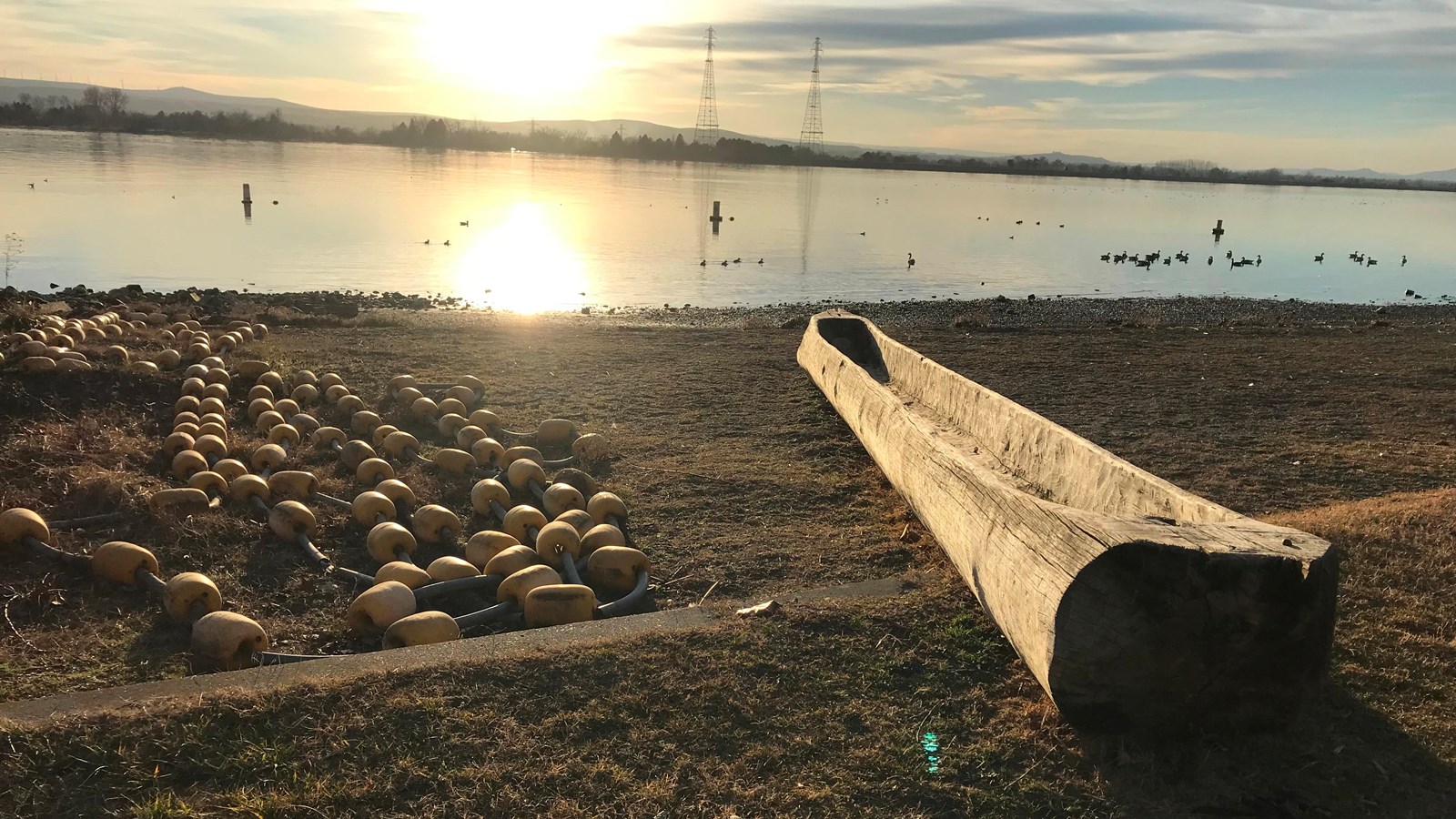Last updated: March 10, 2022
Place
Sacajawea Historical State Park

NPS/BURGHART
Beach/Water Access, Benches/Seating, Bicycle - Rack, Gifts/Souvenirs/Books, Historical/Interpretive Information/Exhibits, Picnic Table, Restroom
Lewis and Clark arrived at the confluence the Snake and Columbia rivers on October 16, 1805, where Sacajawea Historical State Park is today. They were immediately met by Yakama and Wanapum who sold them much needed food and gave them information about the area. The following day, William Clark explored the Columbia River to the north in search of another river he heard about from local Native Americans the night before. After paddling up-stream for about 10 miles (16 km), Clark and his two companions found the mouth of what is now the Yakima River at present-day Richland, Washington. By 1810, fur traders had followed explorers into the Pacific Northwest.
Following the War of 1812, the United States and Great Britain jointly occupied this region from 1818 until1846, when the Oregon Treaty finally decided the border between the two nations. During this period, the British controlled the fur trade and local economy but were unable to successfully colonize the region. US settlers, on the other hand, increasingly moved into the region, arriving either by sea or over the Oregon Trail.
Roman Catholic missionaries arrived in the region in 1826 to minister to the French-Canadian and Native American trappers employed by the fur companies. Protestant missionaries began to arrive 10 years later. Perhaps the most well-known of those were Dr. Marcus Whitman and Narcissa Whitman, who in 1836 established a mission among the Cayuse Indians and fur trappers in the Walla Walla Valley. While the missionaries were not successful in their efforts to convert Cayuse Peoples to Christianity and a settled agricultural lifestyle, the mission station provided aid to some Oregon Trail immigrants from 1843-1847.
In 1847, a devastating outbreak of measles occurred among the Cayuse, killing nearly half the tribe. Dr. Whitman’s medical care seemed to work on the white measles patients, however appeared to be ineffective in helping the Cayuse patients with measles. Some Cayuse people feared that Dr. Whitman was intentionally poisoning them instead of healing them. These fears were not ill-founded; there had been multiple poisoning incidents stemming from the mission station in the years leading up to the measles epidemic. Dr. Whitman was cautioned multiple times that he was endangering himself if he stayed. On November 28, 1847, he was once again warned to leave the mission. He did not heed this last warning. By evening of the following day both missionaries and many of the adult men at the mission were dead. Forty-seven others at the mission station were held hostage for one month.
Officials of the British Hudson’s Bay Company arranged the release of the 47 people still at the mission site. News of the event quickly spread across the continent and back to the United States where reactions were so severe that Congress moved to create the Oregon Territory in 1848. As a result of the actions at the mission station the Oregon Volunteer Militia and, later, the US military fought the Cayuse War against the Cayuse Nation, leading to further deaths and suffering. To end the persecution they faced from the military, Cayuse leaders surrendered five men in 1850.
In 1855 several thousand tribal members from present-day Idaho, Oregon, and Washington met in the Walla Walla Valley to discuss agreements between sovereign tribal nations and the United States. In less than a month, leaders from both sides signed three treaties that created the Nez Perce, Umatilla-Cayuse-Walla Walla, and Yakama reservations. These treaties were ratified in 1859 and became supreme law of the land, part of the constitutional fabric of the United States. These treaties guarantee the Confederated Tribes of the Umatilla Reservation, Nez Perce, and Yakama nations legal status and their government-to-government relationship with the United States. These treaties are still in place today. The Wanapum people never fought white settlers and never signed a treaty with the US government. As a result, they did not retain federally recognized land rights.
The treaties of the Walla Walla Council of 1855 also guaranteed Native American signatories access to resources such as salmon, game, and medicinal plants at their “usual and accustomed places,” retaining some of their traditional lifeways even though they lost million acres of land and billions of dollars in resources. The influx of white settlers that continued throughout the 1800s and 1900s severely impacted indigenous communities and led to conflict between Native Americans and settlers over environmental resources. This conflict continues today.
Native Americans were again displaced from a portion of their traditional homelands with the arrival of the Manhattan Project in 1943. The Manhattan Project’s need for a large safety and security perimeter would further dispossess Native Americans when the federal government appropriated 670 square miles (1740 sq kilometers) of land for the Hanford Site. Tribes lost access to their “usual and accustomed places” for fishing, hunting, and gathering on the Hanford Site that were guaranteed to them in the treaties of 1855. Today, the Confederated Tribes of the Umatilla Indian Reservation, Nez Perce, Wanapum, and Yakama nations actively consult with the US Department of Energy at Hanford to ensure protection of their sacred places and tribal resources, including the Columbia River, on the Hanford Site.
Continue Your Journey
The Sacajawea Interpretive Center features interactive exhibits on the Lewis and Clark expedition, Sacajawea, and the Sahaptian-speaking tribes of the region. Self-guided interpretive tours, hiking trails, recreational facilities such as a boat launch, swim beach, and horseshoe pit, are also available to enjoy.
To learn more about the tribal nations with a connection to the Hanford Site visit Nez Perce National Historical Park, Tamástslikt Cultural Institute, Wanapum Heritage Center, and Yakama Nation Museum & Cultural Center.
